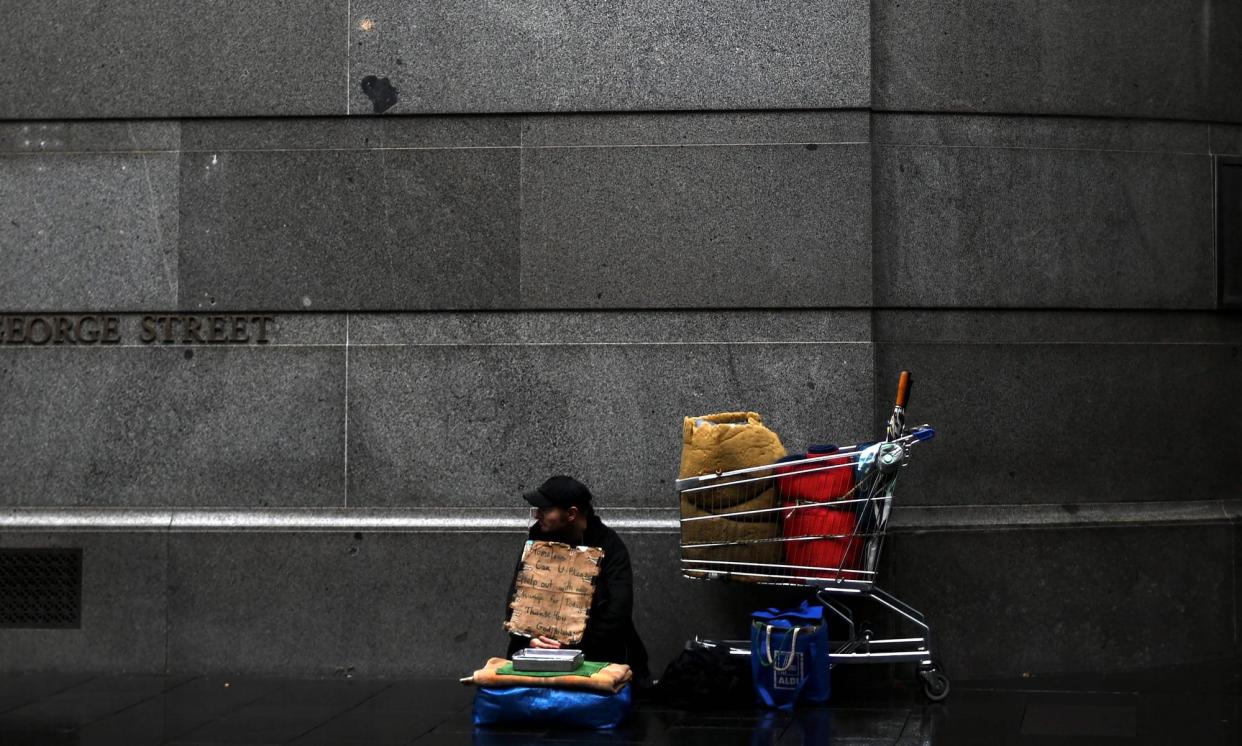An ‘avalanche of demand’: Australians’ need for charity rises just as donations drop

Every Monday, more than 250 emergency relief sites run by the Salvation Army receive a weekly allocation of funds that are typically exhausted by Tuesday, so great is the need for help.
Vouchers for $100, distributed at the charity’s sites nationwide, don’t buy their recipients as much as they used to because of inflation and even these have been trimmed, the Salvos’ general manager of policy and advocacy, Jennifer Kirkaldy, says.
“We’ve just had such an avalanche of demand,” she says. “One of the things we’ve tried to do … is to lower vouchers a little bit so that we can help more people.”
The chief executive of The Smith Family, Doug Taylor, concurs. His group has seen a drop in the numbers of people making donations, particularly for child sponsorships and regular gifts over $50.
“As household costs spiral, fewer Australians are donating,” Taylor says. “Families experiencing disadvantage are often the first to feel the impacts of rising costs, so in fact need our help more than ever.”
It’s a familiar tale with many charities reporting a decline in donations amid the cost of living crunch, with giving by those less well-off has shown the biggest drop, according to Fundraising Institute Australia (FIA).
Related: Poverty experts tell Labor jobseeker payments should be lifted to 90% of age pension
The Albanese government came to office aiming to double philanthropy by 2030, a goal that looks increasingly unachievable. The non-profit sector now hopes the federal budget, released on 14 May, will at least ease some of their strain.
Kirkaldy says boosting youth allowance and jobseeker payments would be one way to make a difference. “We want to be the guardrails at the top of the cliff, not the ambulance at the bottom,” she says.
The assistant minister for charities, Andrew Leigh, says the government has conducted the country’s “biggest ever charity consultation process” and extended tax deductibility status to community foundations. It will soon also receive a once-in-a-generation productivity commission inquiry report.
“For charities that rely on government, we’re supporting more longer-term grants and a fairer indexation process,” Leigh says.
The acting chief executive of Philanthropy Australia, Adam Ognall, says fewer people were claiming a tax deduction for giving in recent years, even before inflation spiked.
Overall giving, though, rose 26% in real terms between 2017 and 2021 to $13bn, led by increased donations by the 50 biggest philanthropists.
Government support also underpins some organisations’ work. The Salvation Army, receives about half of its funds from grants, with much of the rest coming from campaigns such as this month’s Red Shield Appeal that aims to raise $38m.
The Fred Hollows Foundation receives about 70% of its funds from the public. Government support operations at home and overseas accounts for about 12%, a spokesperson says.
“Gifts in wills currently account for about 30% of our support from the public and they are a special way for people to support us while providing us with stability to plan out our eye health work,” the spokesperson says.
According to FIA, about 13% of people say they have set aside bequests for charities. “It is good practice for charities to have a suite of fundraising channels to maximise their success and reduce risk,” Sally Shepherd, an FIA executive manager, says. “Being very cost-conscious and facing resource challenges, most charities engage free digital channels, pro bono services and donated media, et cetera, to reduce expenses and maximise returns on investment.”
For groups entirely funded by the public, such as Australian Conservation Foundation, the revenue squeeze is tight.
Related: ‘Finding it impossible’: homelessness services see 14% jump in employed Victorians seeking help
“Donations to ACF via the appeals we run throughout the year are down by about 40%,” the chief executive, Kelly O’Shanassy, says. “Donations from small regular donors – the people who chip in $20 or $30 a month – are down too, but not to the same degree.”
“We are a well-managed organisation, so we have some resources to fall back on and we mitigate the risks that accompany the cost-of-living situation with income from major donors and bequests,” O’Shanassy says. “But it is a tough time financially, no doubt about it.”
The Australian Marine Conservation Society says the donations pinch comes as challenges needing action only seem to be intensifying.
“People are seeing things like the bleaching the Great Barrier Reef, and it’s confronting,” the society’s chief executive, Darren Kindleysides, says after just returning from a reef visit. “Where there are really clear and immediate needs for funding, people are supporting them.”
However, “when we look at the scale of challenges – facing our oceans, facing our environment, facing our climate – even standing still is going backwards in the face of the escalating threats and needs,” he said.


